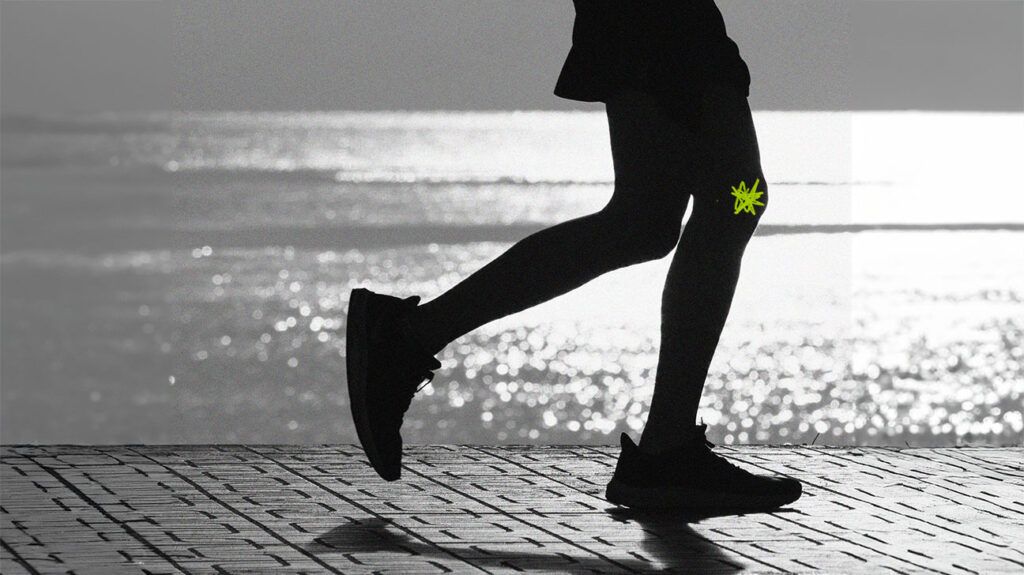Internal derangement of the knee (IDK) describes disorders affecting the knee joint. These can include a torn meniscus, loose bodies in the knee, cartilage damage, and damaged collateral or cruciate ligaments.
When someone develops IDK, it is usually in response to a serious knee injury. For example, IDK may occur when something has hit the knee with some force. Additionally, a person may experience IDK from twisting or overusing the knee to the extent that it tears ligaments.
One of the most common types of IDK is a tear in the anterior cruciate ligament (ACL). Pain is a common symptom of IDK, regardless of the type of injury.

The knee is a hinge joint that is
However, when IDK occurs, a person will likely feel pain, some knee instability, and reduced flexibility and movement when trying to bend or flex their leg.
IDK occurs when a person experiences either:
- a torn meniscus
- loose bodies in the knee
- damaged cruciate or collateral ligaments
- cartilage injury
Because IDK is a term that describes a range of knee conditions that can occur individually or together, each one has different causes.
Torn meniscus
The meniscus is a
Certain physical activities can increase the risk of a torn meniscus. They include:
- carrying heavy loads
- squatting
- kneeling
- jumping
- sprinting
- playing soccer
- skiing
Older adults and those who have osteoarthritis have a
Loose bodies in the knee
Loose bodies, or joint mice as some people know them, are loose pieces of cartilage or bone that move around the knee. The term “joint mouse” predates X-rays, and early clinicians made this comparison as the fragments rapidly move around inside the joint, like a scurrying mouse.
Several conditions cause loose bodies in the knee,
- osteoarthritis
- joint degeneration
- synovial chondromatosis
- physical trauma
Ligament tear
The ligaments in the knee help stabilize it, and the ACL is one of two cruciate ligaments. The cruciate ligaments are on the inside of the knee joint and control how far the knee flexes and extends. The ligaments cross each other to form an X shape behind the knee cap.
People typically tear the ACL
- playing soccer
- playing basketball
- skiing
- playing football
Collateral ligaments are on the inner and outer sides of the knee and help control how far the knee moves to the left or right. Because of this, most damage is usually from an impact or force that pushes the knee to the side. This is either away from the other knee or toward it.
Symptoms may differ depending on the cause of IDK.
Torn meniscus
Symptoms of a torn meniscus
- popping sound or sensation at the time of injury
- swelling
- pain
- stiffness and clicking with leg movement
- loss of flexibility when straightening the leg
- locked knee sensation
Loose bodies in the knee
Symptoms of loose bodies
- knee locking and clicking
- pain, particularly sharp pain when the loose body is stuck between bones
- swelling and inflammation
- mobility issues
Ligament tear
Symptoms of a ligament tear
- pain at the side or center of the knee
- popping sound or sensation at the time of injury
- swelling
- knee locking
- reduced movement
- joint instability
Doctors diagnose IDK using several tools. Firstly, they may ask a person what they were doing around the time their knee started hurting. This helps identify where damage may be present in the knee.
Afterward, they will likely do a physical exam and compare the affected knee to the healthy one. This is so they can see where the swelling is, even if it is subtle.
If they think the knee has undergone significant damage, they may refer a person to have an X-ray, MRI scan, or, in some instances, a CT arthrogram.
For more chronic conditions that cause IDK, such as osteoarthritis, additional scans
IDK has several treatment options, and each one depends on the underlying cause. For minor injuries, such as small tears and sprains, the following RICE therapy may help. RICE
- Rest: Not putting pressure on the knee from walking or jumping reduces stress on the knee and helps it heal. When walking, a person may need crutches.
- Ice: Ice packs help numb pain and reduce inflammation in the knee. Try to ice the area for 15–20 minutes and leave 1 hour between sessions.
- Compression: Wearing a compression bandage or brace
helps reduce swelling . It also keeps the knee still to avoid further stress and injury. - Elevation: Keeping the knee elevated using pillows can help reduce swelling.
For small tears or injuries that require surgery, a person may be able to have arthroscopic surgery. During this procedure, a surgeon makes a few small incisions and repairs the knee with tools that do not require open surgery. For serious tears and injuries, such as ligament reconstruction or total joint replacement, more invasive surgery may be necessary.
IDK has several causes ranging from sprains and tears to more chronic conditions such as osteoarthritis. The most common injury that causes IDK is a tear in the ACL. Generally, a person with minor tears
For more severe instances of IDK, a person may require surgery to repair the knee. The type of surgery a person needs depends on their symptoms. A surgeon will suggest whatever option is the most suitable.
